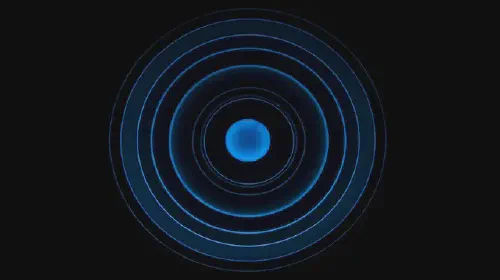Tezos vs. Solana: Understanding the Key Differences
Salomon Kisters
Jun 7, 2023This post may contain affiliate links. If you use these links to buy something we may earn a commission. Thanks!
Are you interested in the cryptocurrencies and blockchains currently making headlines in the news? If so, then Tezos and Solana are two projects to watch out for.
Two of the fastest-growing, open-source programmable blockchain platforms today, with perhaps the most innovative features, Tezos and Solana have contributed significantly to the recent developments taking place in the crypto world. Tezos and Solana differ in their consensus mechanisms, scalability, smart contract languages, governance models, and application ecosystems.
Tezos emphasizes on-chain governance and formal verification, while Solana focuses on high scalability, fast transaction processing, and a diverse range of applications.
In this article, we will explore different elements of both blockchains and, towards the end, make an educated comparison as to which is a better investment option for you.
Understanding Solana: A Review
Established in 2020, Solana was launched by Solana Labs and founder, Anatoly Yakovenko. Since it was released relatively much later than other blockchain networks like Bitcoin or Litecoin, its developers considered all the drawbacks and loopholes in the pre-existing blockchain networks prior to Solana’s launch.
This contemporary blockchain network, therefore, is deemed much better suited for anything crypto-related — from investments and long-term storage to transactions and dApps. Solana is especially noted for many of its innovative new features. Let’s take a closer look at these features.
1. High Performance
Solana tackles issues like scalability and throughput quite effectively — the ability of the network to withstand an increasing number of transactions and nodes with the use of advanced, highly sophisticated technology, which permits as many as 50,000 transactions per second. It attains such astonishing speeds by utilizing a feature called Proof-of-History, a novel consensus algorithm used in blockchains that solves the problem of time.
This algorithm works like a clock; with each tick, Solana records all the events occurring on the blockchain and links them to the previous events via a unique code, thus creating a chain of events that cannot be modified. The platform uses this model to pre-process transactions and speeds up the overall network operations.
2. Fee-Burning Mechanism
A common pattern observed in the majority of blockchains is that with each transaction, the network gradually increases the amount of crypto in circulation. However, Solana does this differently from other networks. So whenever you perform a transaction, the network eradicates a portion of the transaction fee the user pays, hence decreasing the number of SOL tokens in circulation. This deflationary action causes the token to remain stable and maintain its value, preventing any excessive inflation in the network.
3. Tools for dApps
Solana offers its users a wide array of tools and resources that can be utilized to develop and program various decentralized applications. These applications exist on the blockchain network and involve a certain cryptocurrency in their operations. This means that Solana users can develop numerous applications, ranging from gaming platforms and crypto-gambling to decentralized exchanges and trading platforms. Some examples include Serum Market and Mango Market.
Solana, a contemporary blockchain designed to alleviate other pre-existing blockchains’ limitations, has much more to offer. Check out this article for more information about the blockchain platform.
Tezos: The Self-Updating Blockchain
Unlike Solana, the journey to create Tezos has been much more sluggish and bumpy, but it is undertaken with the same level of scrutiny. A couple named Arthur Breitman and Kathleen Breitman commenced their work on a project in 2014. The platform was still not completed or published until 2018, which was when $232 million were raised in Initial Coin Offering (ICO) — the funding to boost the blockchain project.
With this impressive funding, the Tezos blockchain rewarded its users with valuable features, which we will look into later in the article.
1. Self-Amending Protocol
Tezos is a blockchain platform that aims to provide a secure, decentralized, and upgradeable infrastructure for building and deploying smart contracts and decentralized applications (dApps). The hallmark of Tezos is its self-amending, self-updating protocol, which sets it apart from every other blockchain network in the crypto space today.
Generally speaking, if you would like to make changes or adjustments to a blockchain network, you need to create a hard fork which then creates an entirely new blockchain incompatible with the original parent network. Examples of these include Bitcoin with Bitcoin Cash and Bitcoin Gold, Ethereum with Ethereum Classic, and LiteCoin with LiteCoin Cash, to name a few.
Tezos bypasses the hard fork with its exciting self-amending feature, allowing users to propose adjustments and upgrades on the network. The currency holders can then vote on whether to proceed with the changes. If the proposal is accepted, the network automatically integrates the changes and upgrades without requiring any supervision or monitoring.
This whole process is incentivized, as the users whose proposals are accepted are rewarded with Tezos tokens to attract more valuable and productive upgrades for the network, hence, optimizing its network performance.
2. Smart Contracts
Created on the Ethereum network, smart contracts are self-executing programs that automate the actions required in a contract between two parties. Their unique ability to ensure security, validity, and swift mode of action has made them extremely popular in the crypto world. Users of the Tezos blockchain network can work with smart contracts written in the simple-to-read and write Michelson domain-specific language. Compared to other networks, this makes writing a complicated smart contract significantly easier with Tezos.
3. Safety
The Tezos blockchain network is centered around strict security protocols. It relies on a method known as the formal verification technique (source). This technique employs mathematical proofs to ensure the validity and accuracy of smart contracts, adding an extra layer of security to transactions carried out on the network.
4. High Scalability
Tezos deploys a unique consensus mechanism called Liquid Proof-of-Stake (LPoS), a more efficient alternative to the traditional Proof-of-Stake model. This method amps up the speed with which transactions occur on the network. Tezos, with its self-amending protocol, has much more to offer, and you can learn more about it by visiting its official website.
Now that we have covered the basics of the two blockchains, without further ado, let’s dive into what sets them apart.
Solana vs. Tezos: Comparing the Self-Updating Network with the High-Performing Blockchain
Although both Solans and Tezos provide users with swift, secure, and scalable transactions, there are a number of differences between the two blockchains that give one system an advantage over the other.
Governance Model
With the self-updating protocol, Tezos governance model ensures that the network remains decentralized and community-driven. Therefore, Tezos is more likely to cater to the needs of its consumers in the long run when compared with Solana.
Consensus Algorithm
As mentioned earlier, Tezos uses Liquid Proof-of-Stake, while Solana depends on Proof-of-History combined with a Proof-of-Stake mechanism. Both methods are great for increasing scalability. However, Solana’s techniques are more efficient; thus, Solana offers faster transactions in less time.
Smart Contract Language
As discussed previously, Tezos uses simple language to create smart contracts, which is easier for beginners to understand and execute. On the other hand, Solana uses Rust, which makes it the go-to option for experienced developers as it gives them more alternatives to work with.
Tokenomics
As with most cryptocurrencies, SOL tokens have a limited supply. The maximum number of SOL tokens that can ever be in circulation is 511,616,946. Tezos tokenomics, on the other hand, allows users to stake their tokens in the governance and earn rewards as a result. This creates a stable supply of tokens in the Tezos blockchain. Although Solana has similar staking models, it is not comparable with Tezos. Thus, Solana’s limited token supply puts it at a disadvantage against Tezos.
Adoption
Adoption refers to how much or how often a cryptocurrency or token people used in the crypto world. Although Tezos is much older than Solana, it is still much less adopted. As of May 2023, Solana ranks ninth worldwide among all cryptocurrencies, with a market cap of over $8.3 billion, compared to just over $8.3 million of Tezos. Solana is much more widely used in comparison with Tezos.
Ecosystem
Like adoption, Solana’s rapidly evolving ecosystem has many ongoing projects and applications. Because of its high performance, it has garnered more attention in the crypto world, offering users with efficient ways to interact on the network. Tezos, in contrast, has a much smaller ecosystem compared with Solana. Still, Tezos has a very active and supportive community of builders, innovators, and entrepreneurs, all of whom are committed to growing the platform.
All in all, both networks have pros and cons, but with this article’s help, you can decide which decentralized network suits your needs best.
Conclusion
Solana and Tezos are blockchain platforms that offer unique features and capabilities.
These include high scalability, high performance, vibrant ecosystems, and the ability to use dApps and smart contracts.
While Solana is much bigger than Tezos regarding market cap, number of users, and performance, Tezos beats Solana in other areas like self-governance and long-term token supp
Stay informed with the latest insights in Crypto, Blockchain, and Cyber-Security! Subscribe to our newsletter now to receive exclusive updates, expert analyses, and current developments directly to your inbox. Don't miss the opportunity to expand your knowledge and stay up-to-date.
Love what you're reading? Subscribe for top stories in Crypto, Blockchain, and Cyber-Security. Stay informed with exclusive updates.
Please note that the Content may have been generated with the Help of AI. The editorial content of OriginStamp AG does not constitute a recommendation for investment or purchase advice. In principle, an investment can also lead to a total loss. Therefore, please seek advice before making an investment decision.

Top Enterprise Blockchain Platforms
There are several types of enterprise blockchain platforms available to meet the needs of large corporations. Let's have a look at the top enterprise blockchain platforms.

Who is Behind Chainlink?
Chainlink is a revolutionary technology in the blockchain space that has quickly become one of the most exciting blockchain projects today. So who is behind this amazing technology?

Are Nfts Bad for the Environment?
Energy consumption is the main issue that people have with cryptocurrencies and NFTs. But how bad are NFTs for the environment after all?
Protect your documents
Your gateway to unforgeable data. Imprint the authenticity of your information with our blockchain timestamp